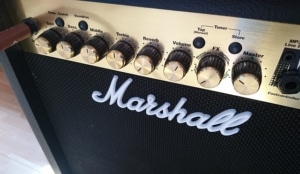active speaker are speakers with a built-in amplifier and are connected to the preamplifier output of a preamplifier. In the active speaker is a crossover and after the crossover for each Chassis own amplifier. Phase shifts caused by the crossover can also be corrected frequency response the individual.
Passive loudspeakers have no amplifier and are connected to a power amplifier. This is what happens in the passive speaker Signal divided by the crossover into the different frequency ranges for the individual drivers, e.g. B. for one woofer, a midrange and one Tweeter. In order for all drivers to have their correct volume, corrections must be made in the crossover. However, since amplification no longer takes place, correction is difficult.

Pros and cons of active and passive speakers
Advantage active:
The main benefit is the ability to better control the chassis. Due to the mechanical movement in the housing and the electrical properties, a chassis is a complicated structure that can best be controlled by its own amplifier, because the amplifier can be adjusted to the chassis, even the membrane movement or the sound pressure generated can be measured and the amplifier power is then controlled or adjusted. If you know the sound pressure curve of the chassis, you can almost totally "straighten" the frequency response, which is a prerequisite for HiFi is. The influence of a crossover in terms of phase shifts can be completely corrected.
Additional advantages:
No power amplifier is required because the power amplifier is built into the speaker. There are many active loudspeakers in the PA area, so you can easily increase the volume by adding additional active loudspeakers. The line length no longer matters as it does with passive loudspeakers, because there is none via the line to the loudspeaker Performance is no longer transmitted, but only a "small signal". In connection with symmetrical transmission, very long distances can be bridged, whereby one then has to think again about the sound propagation time through the air (in PA technology).
Disadvantage active:
Due to the built-in electronics, the active speaker is more expensive. This is put into perspective when you consider that there is no power amplifier. Due to the necessary power supply, there are 2 connections: signal and 230V. A remote turn-on may be required.
Advantage passive:
A loudspeaker can be built cheaply with just a few components.
Disadvantage passive:
The opportunities for improvement are limited. Crossovers cause phase shifts and these can only be partially corrected. Drivers with different levels of noise have to be adjusted.
Due to the elimination of the power amplifier and the relatively small selection of active loudspeaker manufacturers, there is much less to tinker with, be it the cable, the power amplifier or the crossovers. Building an active controlled speaker yourself is almost impossible.
Unregulated and Regulated:
The simplest construction for a powered speaker is to simply build the amplifier into the cabinet, as with most subwoofers. The amplifier amplifies the music signal and drives the chassis and this moves. However, this does not result in any improvement Klang. This can only be achieved through control and usually quite complex electronics: with an active crossover, bi-amping (or an amplifier for each driver), phase control, time align, EQing, limiter, etc. Regulation means that the movement of the Membran is measured (there are several methods for this, e.g. capacitive (with tweeters), by microphone, with another Kitchen sink, optical with a light barrier) and deviations from the electrical signal of the amplifier can be corrected. The result is an audible improvement.
Connection an active loudspeaker to a suitable power amplifier output:
In principle, this is possible, but not recommended. The power amplifier is usually trimmed for a load of 4-8 Ohm. This load has a voltage of 30 Volt or more (30 volts at 4 ohms for 225 watts). The active speaker, on the other hand, only needs a few volts for Full scale. With a few resistors you can reduce the voltage, you have to use sufficient ones community-led approach respect, think highly of.
